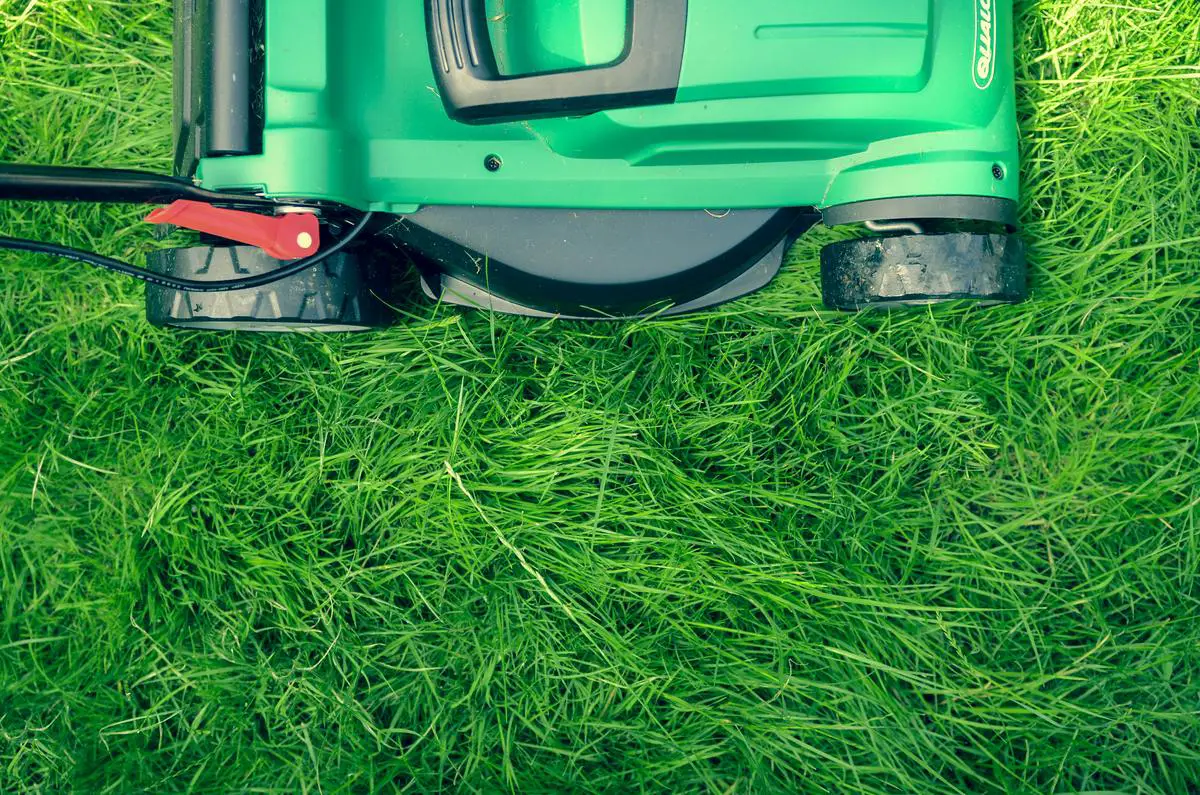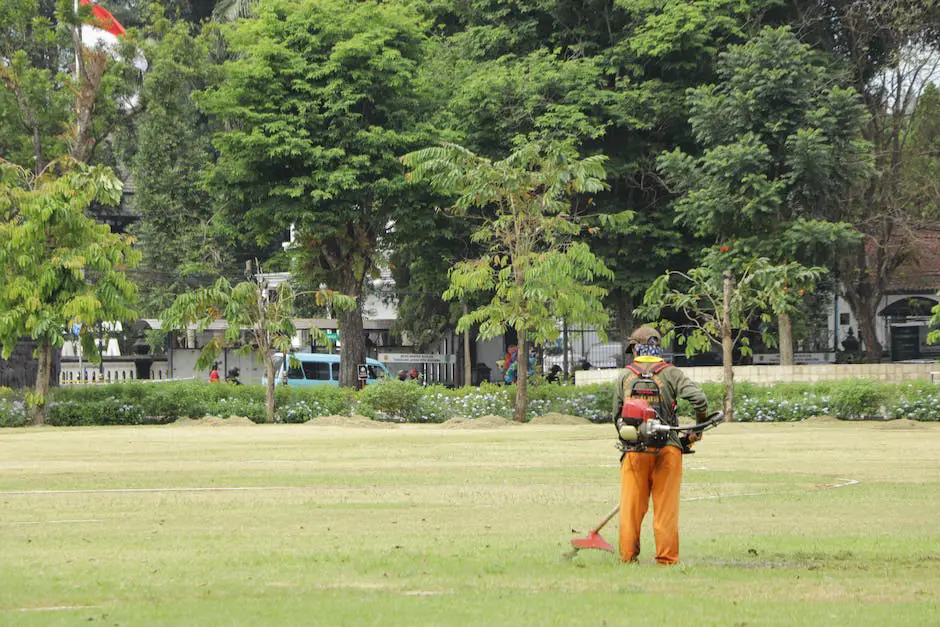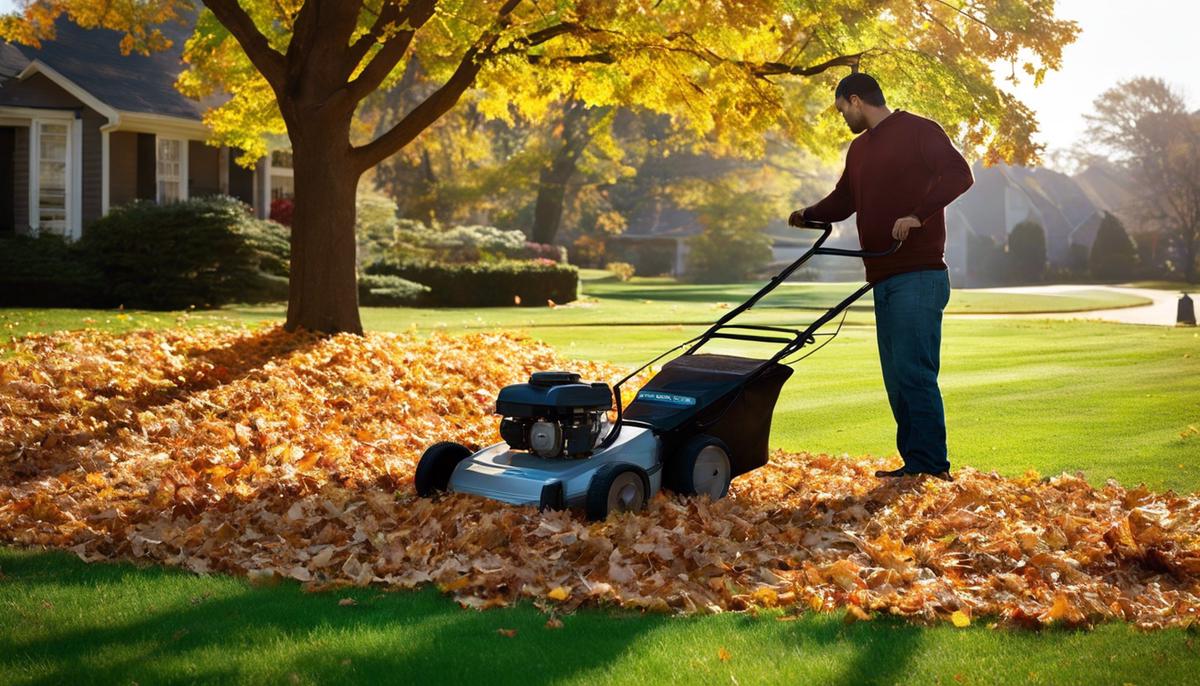Maintaining a lush, green lawn through lawn mowing is both an art and a science. It is rooted in techniques that both protect and enhance the vitality of grass. From the casual backyard enthusiast to the dedicated landscaper, anyone who takes pride in their turf understands that a beautiful lawn begins with thorough preparation.
This ensures not only that your green carpet is visually pleasing but that it’s healthy as well. Before the hum of the mower’s engine fills the air, the attentive caretaker will remove debris and confirm that the turf is dry enough to withstand the cut, all while precisely adjusting the mower blade height for the optimal trim.
With attention to detail and a keen eye for precision, the foundation is laid for a well-manicured lawn that stands as a testament to diligent care and smart practices.
Preparing the Lawn
Prepping Your Lawn for the Ultimate Mow
A lush, well-manicured lawn is the pride of many a homeowner—a verdant canvas to the picturesque setting of one’s abode. Achieving that perfect mow, however, isn’t merely a matter of firing up the lawnmower and buzzing across the grass.
There’s a satisfying art to the prep work that pays off in beautiful, even cuts and healthy turf. So, here’s the lowdown on grooming your lawn for its best cut yet.
Clear the Stage
Before dreaming of those neat, stripey lines, you’ve got to clear the deck. Remove any branches, stones, toys, or debris scattered across your lawn. Foreign objects are not just obstacles—they can also be hazardous if tossed by the mower blades.
Attack the Weeds
Nothing interrupts the velvety uniformity of a freshly cut lawn quite like pesky weeds. Take the time to pull out or treat weeds appropriately before you mow. Some prefer the satisfaction of hand-pulling, while others may opt for a weed control solution—just ensure it’s friendly to your lawn type and local environment.
Trim the Edges
Edging your lawn creates a sharp, clean boundary that defines your grassy expanse. Use a string trimmer or edger to trim grass along sidewalks, driveways, and garden beds. This attention to detail makes the final mowing result look even more polished.
Mower Maintenance
The state of your mower deeply impacts the quality of the cut. Ensure the blades are sharp, for blunt blades tear the grass, leaving jagged edges that invite disease. Also, check the oil and fuel, clean the air filter, and ascertain that the wheels are firm and properly adjusted.
Check the Height
Cutting your grass to the correct height is paramount. Rule of thumb: never shave off more than a third of the grass blade length at a time. Know your grass type and the recommended mowing height—cool-season grasses typically fare well with taller cuts, while warm-season varieties can handle a bit shorter.
The Right Conditions
Dewy or wet grass can clump and not cut evenly, so wait until later in the day when the lawn is dry. However, avoid mowing during the heat of the day to prevent heat stress on your grass and yourself.
It’s Go Time
Now with a debris-free, edged, and dry lawn ready, and your mower prepped, you’re poised for mowing greatness. Start from the outside and work your way in, overlapping each pass slightly to ensure you don’t miss a strip.
Alternate your mowing pattern each time to prevent compacting the soil and to encourage the grass to stand tall and not lean in one direction.
Remember, a perfect mow isn’t a race—it’s more of a waltz with nature, a ritual that pays homage to the green beneath your feet. Happy lawn mowing!

Mowing Patterns
Expert Tips for Effective Mowing Patterns That Promote a Luxuriant Lawn
Welcome to the world of lawn care – a place where diligence and the right techniques can transform a patchy yard into a verdant oasis. Today, let’s jump straight into the art of lawn mowing patterns. It’s not just about the aesthetic; these methods are pivotal for endorsing grass health and encouraging even growth.
The Classic Stripe
The quintessential striped lawn is often the hallmark of ballpark grandeur. To achieve this at home, start by mowing in parallel lines. Alternate the direction with each row; mow north to south and then south to north. This pattern bends the grass slightly in different directions, reflecting sunlight differently and creating that striking light and dark stripe effect. Additionally, this method reduces soil compaction and promotes healthier grass growth.
Checkerboard Majesty
For those seeking to elevate their lawn mowing game, the checkerboard pattern is the next step. After mowing parallel lines in one direction, go over the lawn again with perpendicular lines. This double-cut not only strengthens the stripes but also ensures a more uniform cut. Remember to overlap each pass slightly to avoid uncut patches and give a crisper appearance.
The Spiraling Effect
Starting at the edge of the lawn, begin mowing in a spiral pattern towards the center. This is a fun way to mix it up and can be particularly effective in smaller lawns or those with a central feature such as a garden bed or fountain. It’s critical to keep a steady pace and consistent turn radius for an even cut.
The Diagonal Approach
Want that diamond-cut look? It’s all about the diagonal. Mow at a 45-degree angle to the edges of your lawn. Once the entire yard is covered, return over the area with another set of diagonal lines crisscrossing the first. This not only inflates curb appeal but assists in preventing ruts from forming as the mower wheels travel over different paths each session.
Circular Continuity
If there’s a large tree or round feature on the lawn, use it as a focal point to mow in expanding circles around it. This avoids awkward back-and-forth mowing around obstacles. It’s an efficient pattern and visually draws attention to the central feature.
Zigzag Zest
Jazz up the lawn with a zigzag pattern for a unique look. Mow a straight line, then turn at an angle to start the next line, creating a back-and-forth pattern across the lawn. This method works well for sloped areas, as it can help prevent erosion and improve water absorption.
Mowing Against the Grain
Lastly, consider the direction in which the grass naturally leans. Mowing against the grain stands the grass up before cutting, which can result in a cleaner cut and more upright growth. It requires attention to detail as each area of the lawn may have varying grain directions.
Cultivating a healthy, picture-perfect lawn is both an art and a science. By integrating these mowing patterns, not only is a visually appealing landscape achieved, but it sets the stage for robust grass that can weather the elements and fend off pests. Remember, the pattern can be as simple or complex as desired, but what truly matters is consistency and care.
Mower Maintenance
When it comes to sculpting the perfect lawn, the artistry goes beyond pattern selection and initial turf care. Akin to how a sculptor treasures their chisels, those passionate about lawn care must place their mower on a pedestal of routine maintenance.
One might ask, why is such reverence given to this machine? First, let’s dive into prevention; a poorly maintained mower is a beacon for potential problems. Dull blades are the culprits behind raggedly cut grass, tearing rather than slicing with precision. This results in an uneven appearance and, worse, a vulnerability to disease that can ravage an otherwise healthy lawn.
But it’s not just about the cuts! A mower begging for maintenance is a noisy affair, laboring twice as hard for half the results. This inefficiency isn’t just tough on the machine; it’s tougher on the operator and can turn an afternoon’s work into an all-day struggle.
Importance of Maintaining Your Mower
Maintaining your mower ensures it operates smoothly, lessening the physical toll on you and the environmental toll with reduced emissions.
Let’s talk longevity—both of the lawn and the mower. Imagine finally achieving that velvety green carpet only to have it last as long as a fleeting fashion trend, because the mower faltered.
Regular checks and servicing can extend the mower’s life, translating to years of dependable performance. A well-maintained mower is an ally that stands the test of time, ensuring that the canvas for your lawn artistry remains pristine.
Moreover, a clean deck is as important as a sharp blade. A buildup of grass and debris under the mower can impede movement and affect the cutting pattern and height. Over time, this debris can lead to corrosion and impair the functionality of the mower, throwing a wrench in your grass grooming routine.
Maintaining Gas-Powered Mowers
Gas-powered mowers bring another dimension—engine health. Air filters must be kept clean, the oil should be clear of particles and old fuel never be mixed with new. Compromising any of these aspects can lead to engine troubles that would silence the mower’s roar, leaving the lawn untamed and wild.
Finally, safety stays paramount. A neglected mower can become a hodgepodge of malfunctioning parts, and when blades and engines are involved, the danger isn’t far behind. Ensuring that every safety feature operates correctly is paramount, as is verifying that the machine halts and runs exactly when intended.
In conclusion, whether your goal is the classic stripe, spiraling effect, or meshing designs, the foundation of any splendid lawn is a mower in optimal condition. Maintenance is what separates a fleeting tryst with turf artistry from a full-fledged commitment to the craft—so treat that mower like the masterpiece maker it was born to be.

Mastering Lawn Mowing
As the sun sets on a freshly mown lawn, an unmistakable sense of accomplishment can be felt in the air, crisp like the neatly trimmed blades of grass underfoot. Mastery over one’s lawn is not achieved in a day but is developed through persistent care and attention to the craft of lawn mowing.
It’s the culmination of perfecting various mowing patterns, committing to diligent mower maintenance, and adopting a routine that celebrates the beauty of outdoor spaces.
A well-maintained lawn is more than just a personal triumph; it’s a canvas where nature meets nurture, each blade a testament to the harmonious balance achieved through informed and skilled lawn mowing practices that we have proudly embraced.

